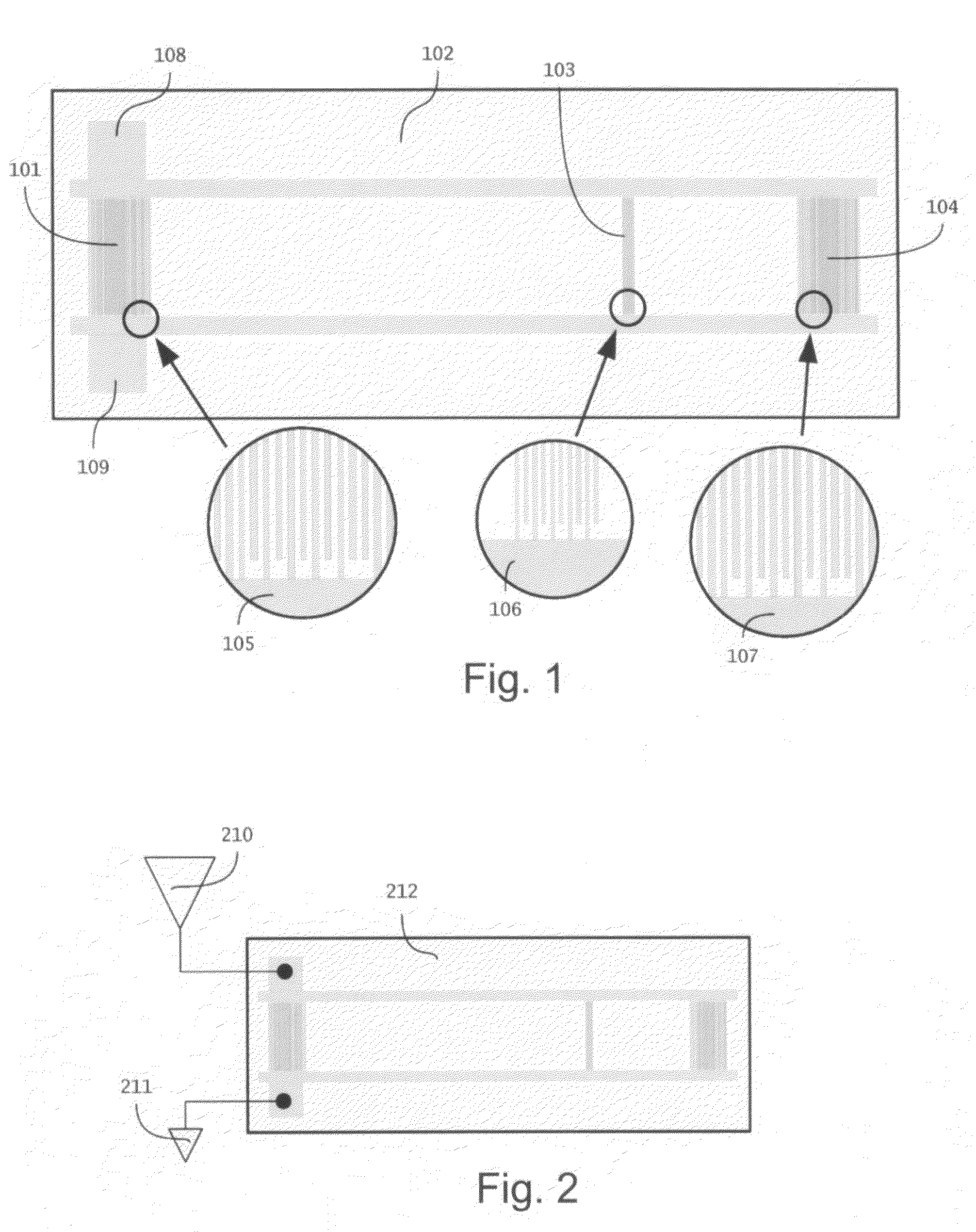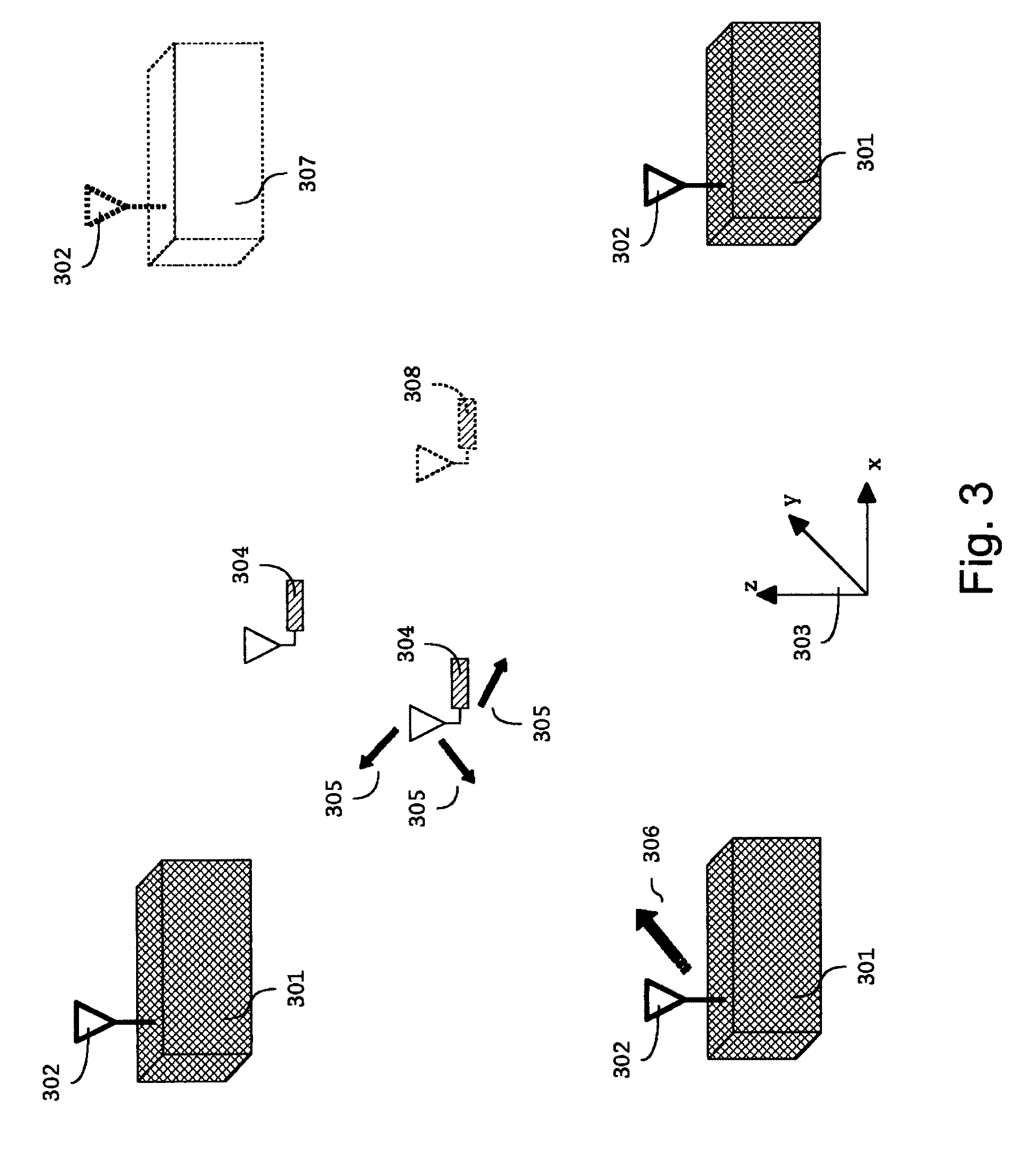Real-time ranging and angle measurements using radar and surface acoustic wave transponders
- Summary
- Abstract
- Description
- Claims
- Application Information
AI Technical Summary
Benefits of technology
Problems solved by technology
Method used
Image
Examples
Embodiment Construction
[0034]Tracking the position and motion of objects is desirable in numerous applications that require or would benefit from methods and apparatus capable of tracking rapidly moving objects with high resolution and high data rates. The preferred embodiments of the invention fulfill this need by using small Surface Acoustic Wave (SAW) transponders, which are referred to here as “microtags,” that are attached to movable objects and that are tracked by a distributed radar tracking network. The radar network tracks the location of the SAW transponders in three-dimensional space with an update rate, or number of samples per second, on the order of 10 kHz with an accuracy to within 10 cm3 or better in an optimized implementation.
[0035]Surface Acoustic Wave devices were originally developed in the 1960's and are generally described by H. Matthews in “Surface Wave Filters: Design, Construction, and Use,” New York: John Wiley & Sons, 1977, and by C. K. Campbell in “Surface Acoustic Wave Device...
PUM
 Login to View More
Login to View More Abstract
Description
Claims
Application Information
 Login to View More
Login to View More - R&D
- Intellectual Property
- Life Sciences
- Materials
- Tech Scout
- Unparalleled Data Quality
- Higher Quality Content
- 60% Fewer Hallucinations
Browse by: Latest US Patents, China's latest patents, Technical Efficacy Thesaurus, Application Domain, Technology Topic, Popular Technical Reports.
© 2025 PatSnap. All rights reserved.Legal|Privacy policy|Modern Slavery Act Transparency Statement|Sitemap|About US| Contact US: help@patsnap.com



